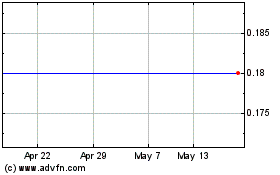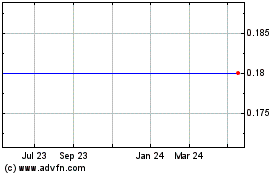The fair value of unlisted or unquoted securities and loans
receivable is determined by using valuation techniques. Judgement
is used to select a variety of methods and make assumptions that
are mainly based on market conditions existing at the end of each
reporting period.
Although best judgment is used in estimating fair value, there
are inherent limitations in any valuation technique. Estimated fair
value may differ significantly from the value that would have been
used had a readily available market for such investments existed
and these differences could be material to the consolidated
statement of assets, liabilities and partners' capital. Additional
information about the level of market observability associated with
investments carried at fair value is disclosed in Note 4 below.
(ii) Taxation
The Fund may be subject to income taxes in jurisdictions it
invests and operates. Significant judgement is required in
determining the worldwide provision for income taxes. There are
many transactions and calculations for which the ultimate tax
determination is uncertain. The Fund recognises liabilities for
anticipated tax audit issues based on estimates of whether
additional taxes will be due. Where the final tax outcome of these
matters is different from the amounts that were initially recorded,
such differences will impact the current and deferred income tax
assets and liabilities in the period in which such determination is
made.
3 Concentration of risks
(a) Market risk
Market risk represents the potential loss in value of financial
instruments caused by movements in market variables, such as equity
prices.
Investments are made with a focus on the Greater China.
Political or economic conditions and the possible imposition of
adverse laws or currency exchange restrictions in that region could
cause the Fund's investments and the respective markets to become
less liquid and also the prices to become more volatile.
The Fund's investments may have concentration in a particular
industry or sector and performance of that particular industry or
sector may have a significant impact on the Fund. The Fund's
concentration of investments in a particular industry or sector is
presented on the consolidated schedule of investments.
The Fund's investments may also be subject to the risk
associated with investing in private equity securities. Investments
in private equity securities may be illiquid and subject to various
restrictions on resale and there can be no assurance that the Fund
will be able to realize the value of such investments in a timely
manner.
See Note 4 below for a discussion on the inputs in fair value
measurement of the Fund's investments.
(b) Interest rate risk
Interest rate risk arises from the fluctuations in the
prevailing levels of market interest rates which affect the fair
value of financial assets and liabilities and future cash flows.
The Fund has bank accounts, restricted cash, loans receivable and
bank loans that expose the Fund to interest rate risk. The Fund has
direct exposure to interest rate changes in respect of the
valuation and cash flows of its interest bearing assets and
liabilities. The Fund may also be indirectly affected by interest
rate changes in respect of the earnings of certain companies in
which it invests.
(c) Currency risk
The Fund has assets and liabilities denominated in currencies
other than the US$, the functional currency. The Fund is therefore
exposed to currency risk as the value of assets and liabilities
denominated in other currencies may fluctuate due to changes in
exchange rates. The net assets of the Fund are denominated in the
following currencies:
2011 2010
US$ US$
Renminbi 204,446,700 146,343,636
United States Dollars 90,337,204 95,161,084
Pounds Sterling (11,657) -
Hong Kong Dollars (14,162) -
-------------------- --------------------
294,758,085 241,504,720
(d) Credit risk
The Fund is exposed to default risk by the counterparties of the
loans receivable. Whilst the loans receivable are structured to
provide the Fund with adequate collateral in the event of default,
enforcement may be subject to the legal system of the countries
where the relevant agreements are entered. Even when a contract is
enforced, the collateral may not be sufficient to fully compensate
the Fund for default losses. In an attempt to mitigate the losses,
the Fund, where possible, obtains independent valuations of the
collateral on a regular basis and monitors the fair value of
collateral relative to the loan amounts plus accrued interest and
where necessary, requires additional cash or collateral from the
borrower to manage its exposure. However, these valuations do not
guarantee the ultimate realizable value of the collateral.
The legal system of the countries in which the Fund invests vary
widely in their development, degree of sophistication, attitude,
and policies towards bankruptcy, insolvency, liquidation,
receivership, default and treatment of creditors and debtors.
Furthermore, the effectiveness of the judicial system of the
countries in which the Fund invests varies, thus the Fund (or any
entity in which the Fund holds a direct or secondary interest) may
have difficulty in successfully pursuing claims in the courts of
such countries. To the extent that the Fund or an entity in which
the Fund holds a direct or secondary interest has obtained a
judgement but is required to seek its enforcement in the courts of
the countries in which the Fund invests, there can be no assurance
that the court will enforce such judgement.
As at 31 December 2011, investments in loans receivable and
bonds of US$58,764,780 (2010: US$62,885,693) were borrowed/issued
by counterparties which are currently unrated by any rating
agency.
(e) Liquidity risk
As the Company is closed-end, it is not exposed to redemptions
of shares by its shareholders.
The Fund is exposed to liquidity risk as the majority of the
investments of the Fund are illiquid while some of the Fund's
liabilities are with short maturity. Details of the maturity
analysis on loans receivable are set out in Note 5 below. Illiquid
investments include any securities or instruments which are not
actively traded on any major securities market or for which no
established secondary market exists where the investments can be
readily converted into cash. Reduced liquidity resulting from the
absence of an established secondary market may have an adverse
effect on the prices of the Fund's investments and the Fund's
ability to dispose of them when necessary to meet liquidity
requirements. The liquidity risk and the liability level of the
Fund is closely monitored by the Investment Manager. All current
bank loans are fully collateralized with cash and the Fund has been
able to distribute US$44,142,178 (2010: US$23,286,109) to PACL II
Limited ("PACL II") during the year ended 2011.
China currently has foreign exchange restrictions, especially in
relation to the repatriation of foreign funds. Any unexpected
foreign exchange control in China may cause difficulties in the
repatriation of funds. The Fund invests in China and is therefore
exposed to the risk of repatriating funds out of China on a timely
basis to meet its obligations. See Note 3(c) above for exposure to
Renminbi.
The Fund has the ability to borrow in short term and is subject
to certain limitations, including the total amount of all
borrowings outstanding at any time shall not exceed 50% of the
Fund's total assets at such time. As at 31 December 2011, all the
Fund's borrowing are fully pledged with bank deposit. See Note 7
for details.
4 Investments
The Fund discloses the fair value of its investment in a
hierarchy that prioritizes the inputs to valuation techniques used
to measure the fair value. The hierarchy gives the highest priority
to valuations based upon unadjusted quoted prices in active markets
for identical assets or liabilities (Level 1 measurements) and the
lowest priority to valuations based upon unobservable inputs that
are significant to the valuation (Level 3 measurements). Three
levels of the fair value hierarchy are as follows:
Level 1
Inputs that reflect unadjusted quoted prices in active markets
for identical assets or liabilities that the Fund has the ability
to access at the measurement date;
Level 2
Inputs other than quoted prices included within Level 1 that are
observable for the asset or liability either directly or
indirectly, including quoted prices for similar assets or
liabilities in active markets, quoted prices for identical or
similar assets or liabilities in markets that are not considered to
be active, inputs other than quoted prices that are observable for
the asset or liability, and inputs that are derived principally
from or corroborated by observable market data by correlation or
other means; and
Level 3
Unobservable inputs based on the best information available in
the circumstances, to the extent observable inputs are not
available (including the Fund's own assumptions used in determining
the fair value of investments)
Pacific Alliance China L... (LSE:PACL)
Historical Stock Chart
From May 2024 to Jun 2024

Pacific Alliance China L... (LSE:PACL)
Historical Stock Chart
From Jun 2023 to Jun 2024
